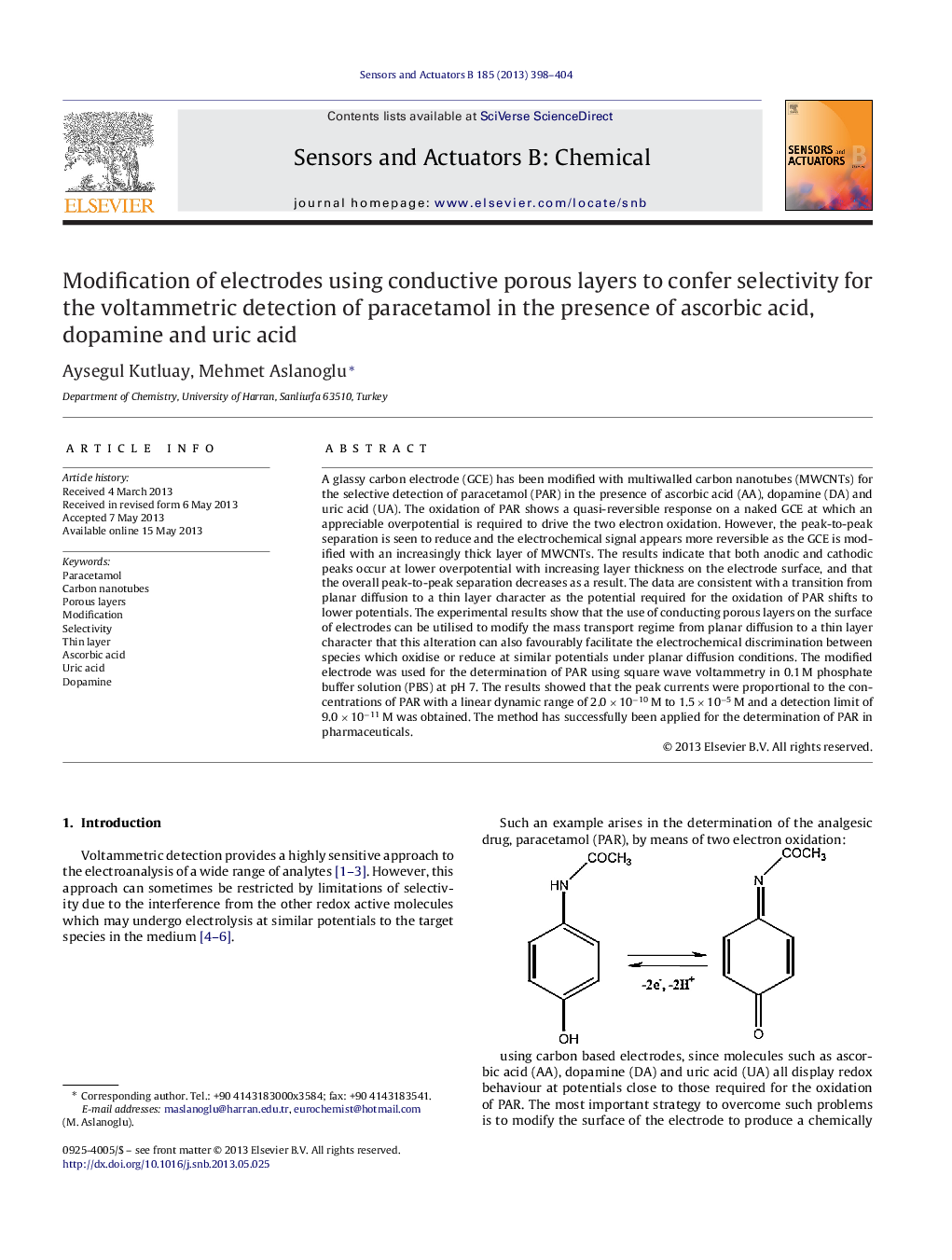| کد مقاله | کد نشریه | سال انتشار | مقاله انگلیسی | نسخه تمام متن |
|---|---|---|---|---|
| 7148859 | 1462105 | 2013 | 7 صفحه PDF | دانلود رایگان |
عنوان انگلیسی مقاله ISI
Modification of electrodes using conductive porous layers to confer selectivity for the voltammetric detection of paracetamol in the presence of ascorbic acid, dopamine and uric acid
دانلود مقاله + سفارش ترجمه
دانلود مقاله ISI انگلیسی
رایگان برای ایرانیان
کلمات کلیدی
موضوعات مرتبط
مهندسی و علوم پایه
شیمی
شیمی آنالیزی یا شیمی تجزیه
پیش نمایش صفحه اول مقاله

چکیده انگلیسی
A glassy carbon electrode (GCE) has been modified with multiwalled carbon nanotubes (MWCNTs) for the selective detection of paracetamol (PAR) in the presence of ascorbic acid (AA), dopamine (DA) and uric acid (UA). The oxidation of PAR shows a quasi-reversible response on a naked GCE at which an appreciable overpotential is required to drive the two electron oxidation. However, the peak-to-peak separation is seen to reduce and the electrochemical signal appears more reversible as the GCE is modified with an increasingly thick layer of MWCNTs. The results indicate that both anodic and cathodic peaks occur at lower overpotential with increasing layer thickness on the electrode surface, and that the overall peak-to-peak separation decreases as a result. The data are consistent with a transition from planar diffusion to a thin layer character as the potential required for the oxidation of PAR shifts to lower potentials. The experimental results show that the use of conducting porous layers on the surface of electrodes can be utilised to modify the mass transport regime from planar diffusion to a thin layer character that this alteration can also favourably facilitate the electrochemical discrimination between species which oxidise or reduce at similar potentials under planar diffusion conditions. The modified electrode was used for the determination of PAR using square wave voltammetry in 0.1Â M phosphate buffer solution (PBS) at pH 7. The results showed that the peak currents were proportional to the concentrations of PAR with a linear dynamic range of 2.0Â ÃÂ 10â10Â M to 1.5Â ÃÂ 10â5Â M and a detection limit of 9.0Â ÃÂ 10â11Â M was obtained. The method has successfully been applied for the determination of PAR in pharmaceuticals.
ناشر
Database: Elsevier - ScienceDirect (ساینس دایرکت)
Journal: Sensors and Actuators B: Chemical - Volume 185, August 2013, Pages 398-404
Journal: Sensors and Actuators B: Chemical - Volume 185, August 2013, Pages 398-404
نویسندگان
Aysegul Kutluay, Mehmet Aslanoglu,